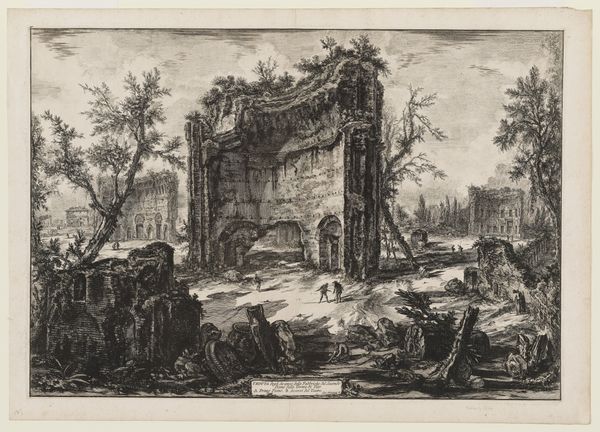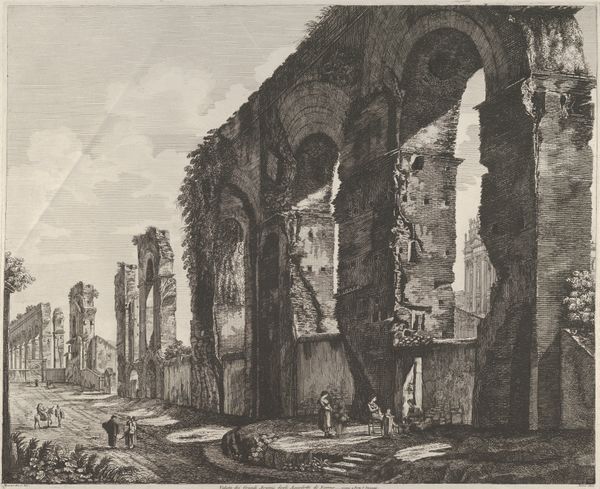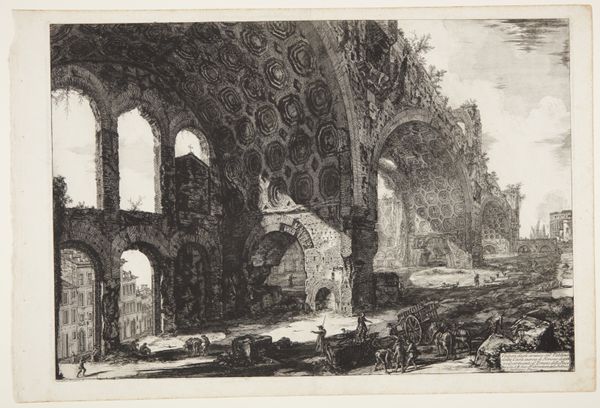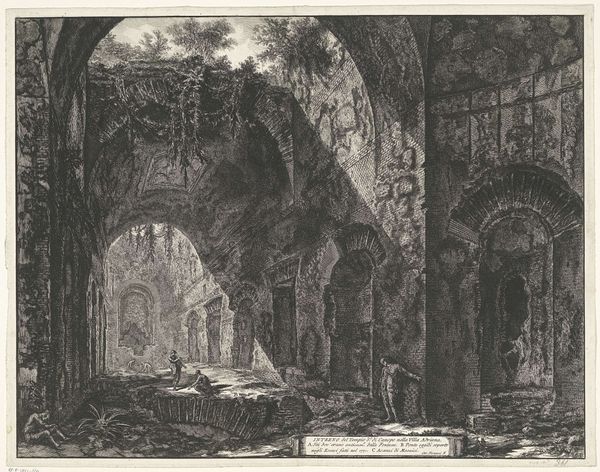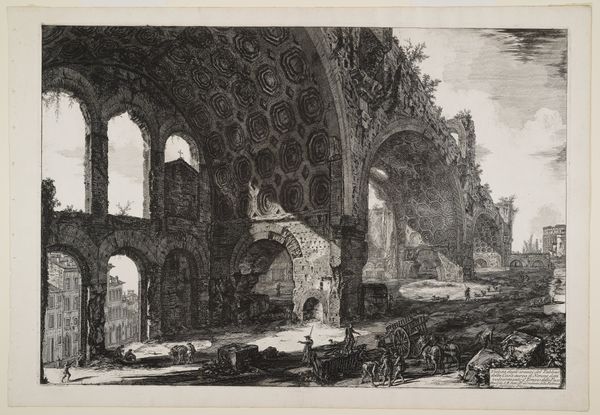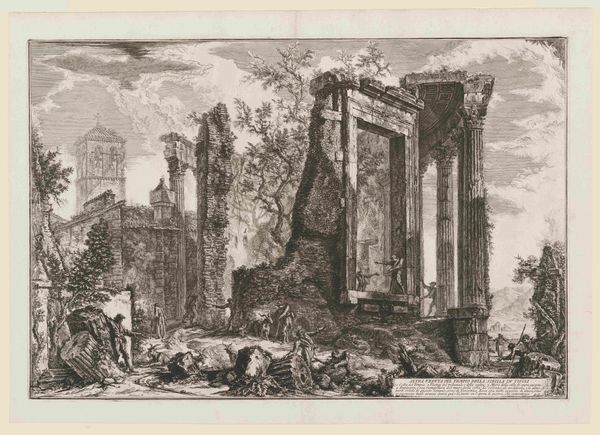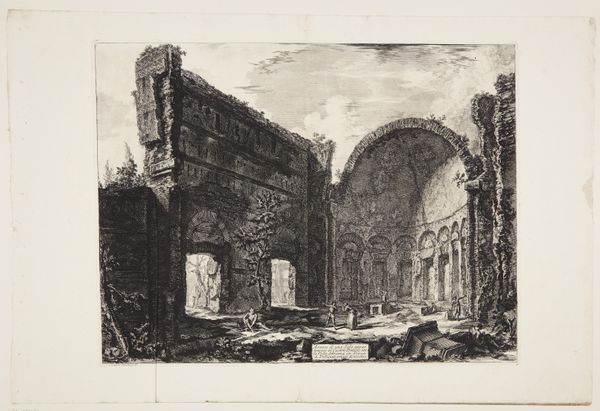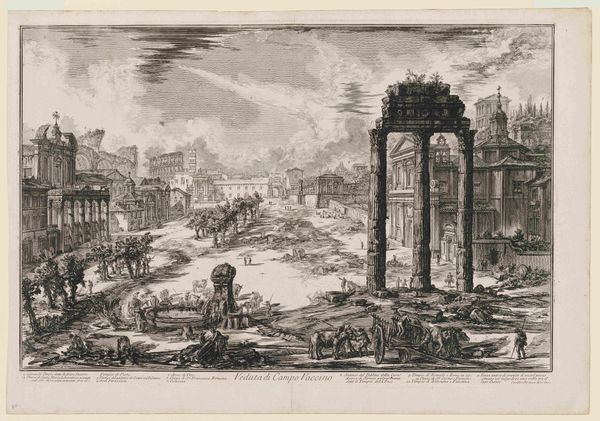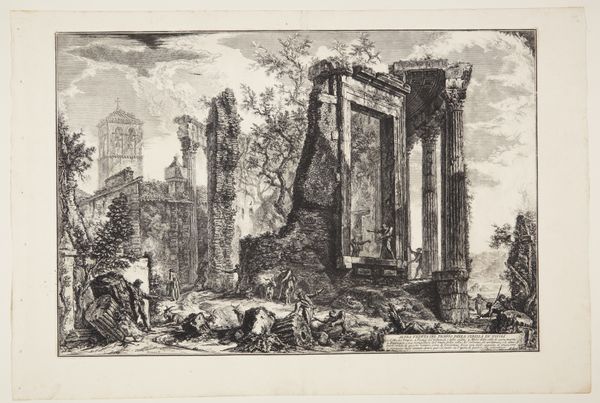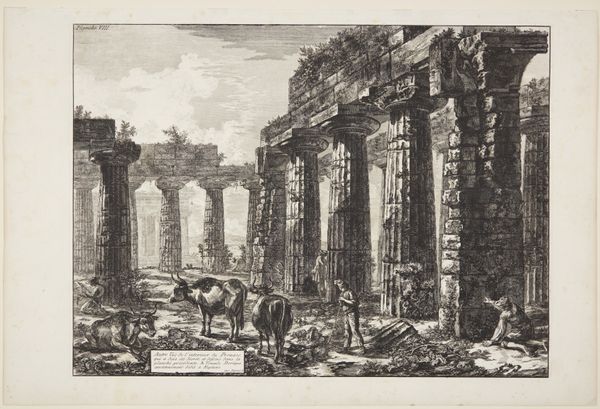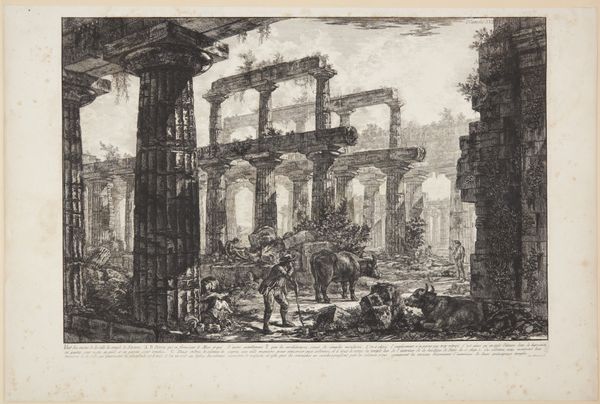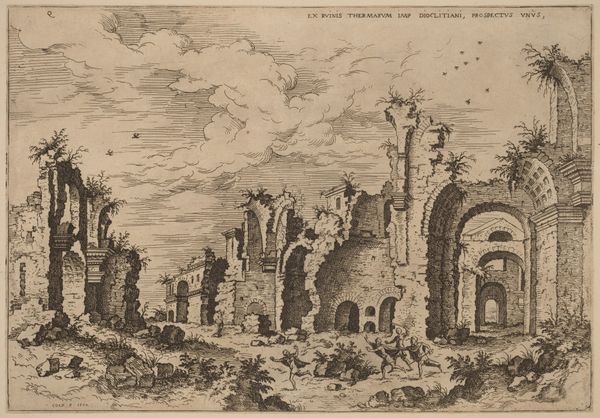
The Aqueduct of Nero Leading to the Palatine 1775
0:00
0:00
print, etching
#
neoclacissism
# print
#
etching
#
landscape
#
romanesque
#
cityscape
#
history-painting
Dimensions: 19 1/4 x 27 3/4 in. (48.9 x 70.49 cm) (plate)
Copyright: Public Domain
Editor: This etching, “The Aqueduct of Nero Leading to the Palatine,” by Giovanni Battista Piranesi, completed in 1775, captures this immense aqueduct in striking detail. It's amazing to see how these ancient structures are presented – almost as living ruins consumed by nature. What stands out to you about this piece? Curator: It’s a powerful image, isn't it? Piranesi wasn't just documenting the aqueduct; he was making a statement about Rome's grandeur and the passage of time. Think about the socio-political climate of the late 18th century. The ruins of Rome were potent symbols, utilized within the debates about the rise and fall of empires, and the relationship between the present and the classical past. Notice how he emphasizes the scale of the aqueduct, dwarfing the figures in the foreground. Editor: That's a good point. The people seem almost incidental compared to the architecture. Was Piranesi romanticizing Roman history, or critiquing something? Curator: He's doing both. On the one hand, the aqueduct's ruin symbolizes the decline of the Roman empire. On the other, its sheer persistence represents the enduring legacy and influence of Roman civilization in European culture. And consider where this piece would have been displayed. Prints like these were sold to tourists, shaping their understanding of Rome and reinforcing its place in the cultural imagination of Europe. Editor: So, it's less about historical accuracy and more about creating a powerful experience for the viewer? Curator: Precisely! Piranesi is engaging in the politics of imagery, using these visual symbols to evoke a range of ideas about history, power, and the role of art in shaping perceptions of the past. The very act of preserving these images in print extended the socio-political implications. Editor: I never thought about it that way. I was just seeing the beautiful lines and composition. Curator: That's the genius of Piranesi. He understood the power of art as a public declaration and visual document to make viewers feel something and challenge them to think. Editor: Thanks, I definitely see more now, it all ties in so deeply with its historic position!
Comments
minneapolisinstituteofart almost 2 years ago
⋮
Emperor Nero (37–68) appears to have ordered the construction of this mile-and-a-quarter stretch of aqueduct (an elevated waterway) to serve Rome’s Palatine Hill after a devastating fire in the year 64 CE. Piranesi’s diagonal composition dramatizes the structure’s imposing scale. His inscription tells us that Pope Clement XIV (r. 1769–74) rescued the ancient aqueduct’s remains when others wanted to raze them. Clement shared Piranesi’s love of Rome’s proud past and worked to save monuments and smaller works of art.
Join the conversation
Join millions of artists and users on Artera today and experience the ultimate creative platform.
